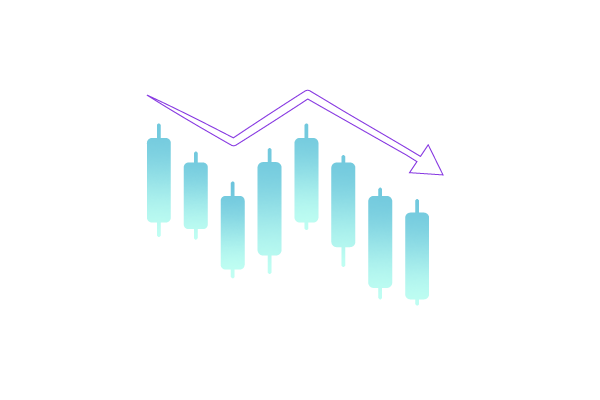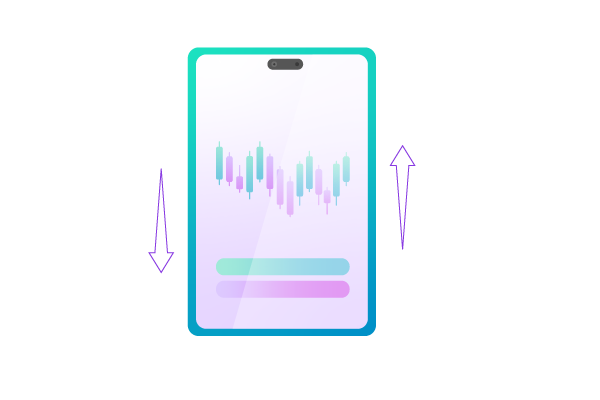
At its core, options trading involves the buying and selling of contracts that give traders the right, but not the obligation, to buy or sell underlying assets at a predetermined price within a specified time frame. These contracts, known as options, provide traders with flexibility and leverage, allowing them to potentially profit from market movements without the need to own the actual assets. Options trading strategies can range from basic directional bets on the price movement of a stock to more complex strategies that involve combinations of options to hedge risk or generate income. While options trading can be highly rewarding, it is important for investors to understand the risks involved and have a solid understanding of the underlying assets and market dynamics before engaging in this sophisticated form of trading.
Options trading is an influential tool that enables investors to engage in speculative activities concerning the future direction of the broader stock market or specific securities, such as stocks or bonds. But what is options trading, and how does it work? Let’s delve into the details.
Understanding Options Trading

Options are contractual agreements that allow investors to speculate on the future direction of an asset’s price without the need to purchase the actual asset. These agreements provide the freedom to choose whether to buy or sell an underlying asset at a predetermined price within a specified timeframe, but they do not impose any obligation to do so. To understand options, you need to know a few key terms:
1. Derivative
Options are a derivative, meaning that they derive their value from another asset. For example, the price of a given stock dictates the value of the option contract.
2. Call option and put option
A call option grants you the opportunity to purchase a security at a predetermined price within a specified timeframe, whereas a put option provides the ability to sell a security at a future date and price.
3. Strike price and expiration date
The predetermined price at which an option can be exercised is referred to as the strike price. Traders have the duration of the option contract, until its expiration date, to decide whether to exercise the option at the specified strike price.
Also Read: 3 Best Crypto Treasury Management Services 2023
4. Premium
The cost of acquiring an option is known as the premium, and it is determined by considering various factors, including the price and value of the underlying security.
5. Intrinsic value and extrinsic value
Intrinsic value is the difference between an option contract’s strike price and the current price of the underlying asset. Extrinsic value represents other factors that affect the premium, like how long the option is good for.
6. In-the-money and out-of-the-money
Based on the current price of the underlying security and the time remaining until expiration, an option can be classified as either in-the-money (profitable) or out-of-the-money (unprofitable).
How Options Trading Works

Options trading strategies can range from straightforward to intricate.
Call options are utilized to speculate on increasing prices, allowing traders to wager on rising prices. On the other hand, put options are employed to bet on falling prices, providing a means to speculate on downward price movements.
Options contracts grant investors the right to buy or sell a minimum of 100 shares of stock or other assets. It is important to note that there is no obligation to exercise options if a trade turns out to be unprofitable. Consequently, options trading can be an affordable method to speculate on various asset classes.
Pros of Options Trading
The practice of engaging in options trading entails a multitude of advantages and disadvantages that ought to be carefully considered. It is imperative to assess these factors prior to venturing into this complex financial realm. Hence, the following analysis will elucidate the pros and cons of options trading, providing a comprehensive overview for potential investors. Here are some advantages of Options Trading:
Specificity and flexibility
Options trading provides traders with a highly specific and flexible approach to their investment strategies. It involves the use of financial derivatives called options, which grant the buyer the right to buy or sell an underlying asset at a predetermined price within a specified timeframe. This versatility allows traders to adopt various strategies based on their market outlook, including bullish, bearish, and neutral approaches. Options trading also offers leverage, enabling traders to control a larger position with a smaller investment. However, it’s crucial to understand that options trading carries inherent risks, and traders should thoroughly educate themselves about the mechanics and associated risks before participating in this market.
In addition to flexibility and leverage, options trading provides traders with a wide range of trading strategies. Traders can combine options with other options (spreads) or with the underlying asset (covered options) to create complex positions that align with their investment goals and risk tolerance. These strategies can offer benefits such as risk reduction, income generation, and hedging against market fluctuations. Nevertheless, it’s important for traders to carefully assess the risks and rewards of each strategy and consider consulting with a financial advisor or conducting extensive research to make informed decisions in the options market.
Hedging potential
Options are a valuable hedging tool in the world of investing. They provide investors with the opportunity to mitigate potential losses in other investments and offer a level of protection. By purchasing put options, investors can limit downside risk by securing the right to sell an underlying asset at a predetermined price. This protects them from significant losses if the asset’s price declines below the strike price. Conversely, call options allow investors to profit from upward price movements by granting them the right to buy an asset at a predetermined price. Options provide flexibility in hedging strategies, allowing investors to tailor their positions to match their risk tolerance and market expectations. However, it’s important to remember that options come with their own risks, and thorough understanding and research are necessary for effective utilization. Consulting with a financial advisor can be beneficial for those looking to incorporate options into their investment portfolio.
High returns
Options trading presents the potential for high returns due to leverage and volatility. It allows traders to profit from price movements in various market conditions by buying or selling options contracts. However, it’s important to recognize that options trading comes with substantial risk. The leverage involved can amplify both gains and losses, meaning that while the potential for significant profits exists, there is an equal potential for substantial losses. Traders need to have a solid understanding of the market, employ effective strategies, and manage risks appropriately to increase their chances of success in options trading. Consulting with a financial advisor and conducting thorough research is highly advisable before engaging in this complex and risky endeavor.
Strategic approach
Options trading offers investors a strategic approach to capitalize on market movements. Unlike traditional stock trading, options trading provides a range of strategies to maximize profits and minimize risks. Options are financial instruments that grant the right, but not the obligation, to buy or sell an underlying asset at a predetermined price within a specified time frame. Traders can use call options to benefit from bullish market expectations or employ put options to capitalize on bearish predictions.
One popular strategy is the covered call, where traders sell call options against owned stocks to generate income. Another strategy is the protective put, which involves purchasing put options to hedge against potential losses in the value of an asset. Other strategies include straddles, strangles, iron condors, and butterfly spreads, each suited for different market conditions. Options trading requires a solid understanding of market dynamics, option pricing, and analysis. While it can be a powerful tool, it also carries risks, so it’s essential for traders to educate themselves, practice, and consider seeking advice from financial professionals.
Cons of Options Trading
While there are advantages, here are the disadvantages of Options Trading that you may want to consider:
Complexity
Options trading is a complex investment process that demands a deep understanding of options contracts, strategies, and market dynamics. Traders engage in buying and selling options contracts, which grant the right to buy or sell an asset at a predetermined price within a specified timeframe. The leverage inherent in options trading allows investors to control a larger asset value with a smaller upfront investment. To navigate this field successfully, individuals must grasp essential concepts such as options pricing, expiration dates, strike prices, and various strategies, including buying calls or puts and engaging in spread strategies. Additionally, traders must stay informed about market dynamics and factors that influence options prices, such as interest rates, volatility, and economic events.
While options trading presents opportunities for significant profits, it also involves substantial risks due to its leverage. Rapid losses can occur if the market moves unfavorably. Thus, it is crucial for traders to have a comprehensive understanding of the risks involved and to manage their positions diligently by implementing risk management techniques like stop-loss orders and diversification. Options trading requires a high level of knowledge, experience, and skill, making it more suitable for experienced investors willing to dedicate the necessary time and effort to comprehend the complexities of options contracts and market dynamics.
Active monitoring required
Options trading requires diligent and regular market monitoring due to the time-sensitive nature of options and their propensity for rapid value fluctuations. Each options contract has an expiration date, and its value can be influenced by market conditions, volatility, interest rates, and news events. Traders must stay informed about market trends, economic indicators, and relevant news that could impact the underlying asset or the overall market. By closely monitoring price movements, staying updated with market information, and managing risk effectively, traders can make informed decisions and adjust their positions in a timely manner.
To monitor the market effectively, traders employ various tools such as financial news platforms, real-time market data, options chain analysis, technical analysis, and options pricing models. These tools provide valuable insights into market trends, implied volatility levels, and potential trading opportunities. Regular monitoring allows traders to assess their risk exposure, keep track of time decay, and make necessary adjustments to their strategies. By actively staying engaged with the market, traders can maximize their chances of success in options trading by capitalizing on opportunities and managing risks effectively.
Not suitable for hands-off investors
Options trading is an investment strategy that involves buying and selling options contracts, providing the right but not the obligation to trade an underlying asset. However, it’s important to note that options trading may not be suitable for individuals seeking a hands-off investing approach. It requires active decision-making and ongoing management of trades.
Engaging in options trading demands market knowledge, active monitoring, strategy development, risk management, and a significant time commitment. Traders must possess a solid understanding of financial markets, continuously monitor market conditions, develop effective strategies, manage risks, and dedicate time to research and analysis. Additionally, options trading often necessitates a specialized trading account and may involve higher fees or margin requirements. Therefore, individuals considering options trading should thoroughly educate themselves about its complexities and potentially seek professional guidance to align their investment goals, risk tolerance, and time availability.
Remember, options trading offers unique opportunities and challenges, so it’s essential to carefully consider your investment goals and risk tolerance before diving into this exciting world.
How to Start Trading Options

Before you dive into options trading, it’s best to have a solid understanding of trading and outline what your investment objectives are. Just like any other form of investing, it is highly advisable to acquire comprehensive knowledge before delving into options trading. Once you feel adequately prepared, it is recommended to start with small investments. You can gradually explore more aggressive options strategies as you gain experience and confidence in the field.
Starting small is a prudent approach in options trading as it allows investors to gain practical experience while limiting potential losses. It is advisable to begin with a clear plan and investment objectives in mind, whether it’s generating income, hedging existing positions, or seeking capital appreciation. Familiarizing oneself with the various options strategies and their associated risks is crucial. Additionally, staying updated on market trends, economic indicators, and company news can provide valuable insights for making informed trading decisions. As investors gain confidence and expertise, they can gradually explore more complex and aggressive options strategies to potentially maximize their returns. Remember, patience and discipline are key when venturing into the exciting world of options trading.
Conclusion
In conclusion, options trading presents versatile opportunities for savvy investors, but it comes with inherent risks and complexities. To navigate this financial tool effectively, investors must conduct thorough research, seek professional guidance, and gain a solid understanding of options strategies. While options trading offers flexibility and the potential for high returns, it requires accurate predictions, risk management strategies, and knowledge of factors influencing options prices such as market volatility and the Greeks.
To mitigate risks and maximize benefits, investors should educate themselves on options and associated strategies, develop a well-defined trading plan, and consider using paper trading or virtual platforms for practice. Active management, continuous monitoring, and disciplined decision-making are crucial in options trading. By approaching options trading cautiously and employing effective risk management techniques, investors can potentially leverage its advantages and enhance their investment portfolios.

I'm Carina, a passionate crypto trader, analyst, and enthusiast. With years of experience in the thrilling world of cryptocurrency, I have dedicated my time to understanding the complexities and trends of this ever-evolving industry.
Through my expertise, I strive to empower individuals with the knowledge and tools they need to navigate the exciting realm of digital assets. Whether you're a seasoned investor or a curious beginner, I'm here to share valuable insights, practical tips, and comprehensive analyses to help you make informed decisions in the crypto space.
- Carinahttps://quantmatter.com/author/carina/
- Carinahttps://quantmatter.com/author/carina/
- Carinahttps://quantmatter.com/author/carina/
- Carinahttps://quantmatter.com/author/carina/
